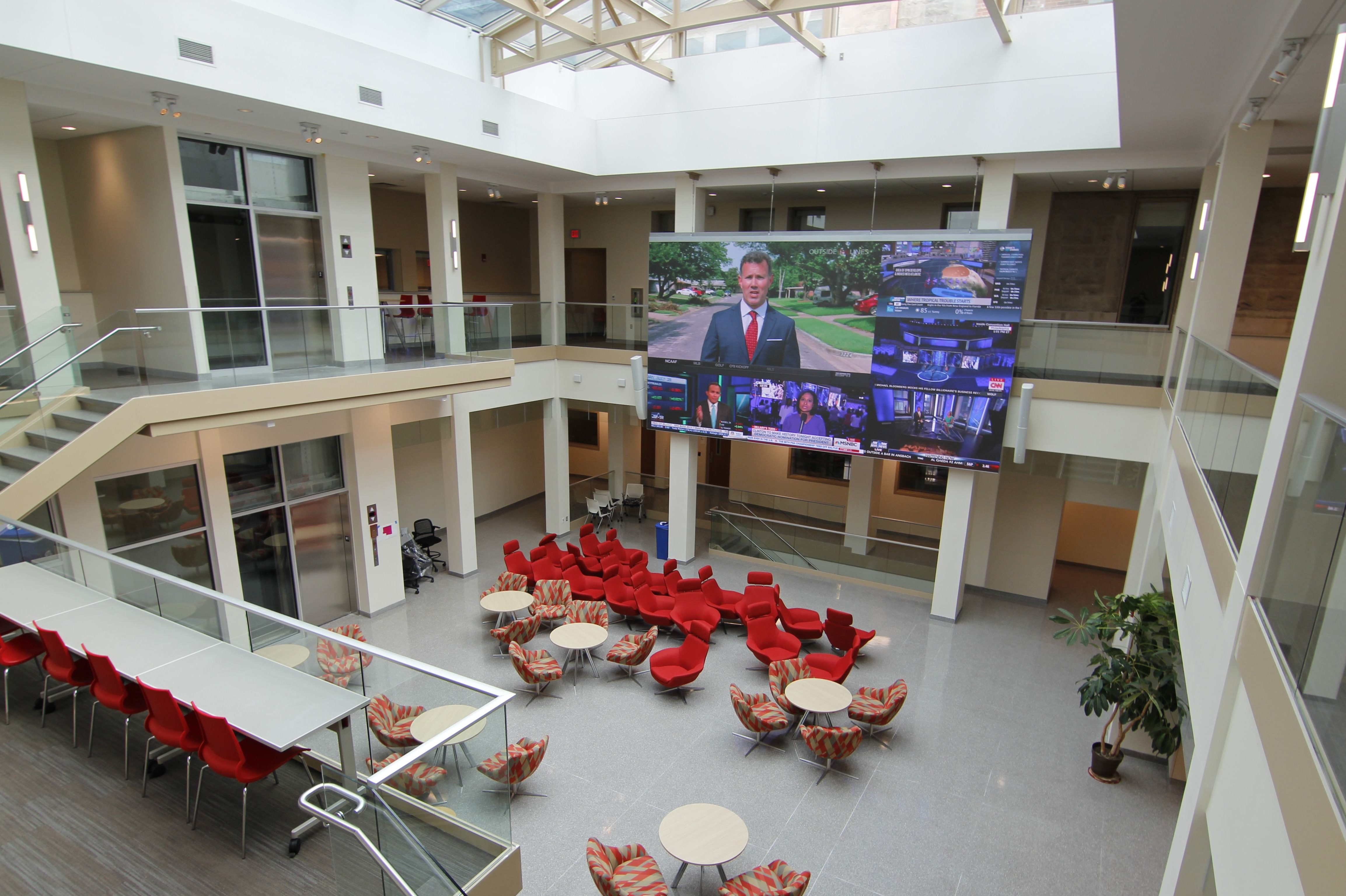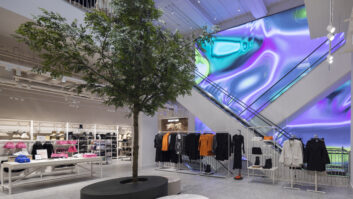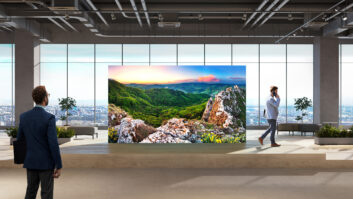
Previously we looked at the four primary digital signage player choices for prospective customers and the pros and cons of each. Here Ian McMurray looks at the shift that has seen the market now assessing media player flexibility to cater to a broader range of use cases across AV.
Certainly, the simplicity and affordable pricing of an in-built player is proving attractive, with some commentators seeing it as driving growth in the digital signage market. Jason Cremins, founder and CEO of cloud-based digital signage company Signagelive, has certainly seen it grow in popularity.
“Since 2012 and the introduction of SoC [system-on-chip] displays to the commercial digital signage market by Samsung, we have seen a considerable shift in the players that are used with Signagelive,” he says. “Historically, over 50% of the digital signage players being used with Signagelive were PC-based – but since 2012, this has shifted to over 75% of new digital signage players being non-PC, with 70% of this total being SoC displays from Samsung and LG. The remaining 30% of new player connections has been Android (IAdea devices) and Chrome OS (Chromebox and Chromebits).
“The major factor, in addition to cost savings and reliability, is that non-PC technology delivers 100% of the required functionality for 75% of the market,” he explains. “The remaining 25% are new PC-based players being used with Signagelive for move interactive and process-intensive applications or for legacy projects where PCs are designed in.”
Cremins makes the point that Signagelive is player-agnostic – and Alessandro Messineo, CEO at Italian cloud-based digital signage company Wallin, has taken a similarly pragmatic approach.
“To make it easier to manage large networks of purpose-built players, we created our digital signage CMS product WallSign, which is integrated with powerful purpose-built players such as those from BrightSign and PADS,” he says. “On the other hand, PC-based solutions remain the most affordable choice, so our Wallin ONE solution is integrated with PCs running Android, Windows and Linux.”
“Then, there are customers for whom the display-integrated player solution is the most comfortable,” he adds. “There’s no comparison between the performance of a display-integrated solution and any PC-based or purpose-built players, but they are very popular – so Wallin ONE can be used with HTML-based displays like those from Philips.”
Received wisdom
Of course, the received wisdom throughout the technology industry has always been that no-one in their right mind chooses the hardware first: it is, of course, the software that provides the solution, and the choice of a hardware platform should be secondary. Does that mean that discussion of players is in some way redundant?
Well, no… “The player hardware absolutely matters,” asserts Hastings. “Software delivers the experience, but the hardware enables that experience. Without enough processing power, without a hardware-accelerated HTML5 engine, without hardware features that enable seamless touch, beacon, Bluetooth, NFC, geo-fencing, audience recognition, motion sensing, button-press experiences, and more… the software is rather useless.”
He is not alone. “If the hardware fails, your amazing piece of content doesn’t do anything. If your hardware is limited in access, processing power, or functionality, your creative opportunity is limited as well. So, in a way, it is all about the software. However, you can’t deliver that software without the proper piece of hardware,” agrees Brice McPheeters, business development manager at NanoLumens, who has his own version of the toaster analogy. “It’s like motor racing: you wouldn’t put the $80 four-tyre special on a Formula One car and expect it to perform, would you?”
Caroline Injoyan, business development manager at Matrox Graphics, takes a balanced view.
“Both pieces play a critical role,” she observes. “However, software is what we interact with most often. Hardware should provide an easily installable, stable, reliable set of features and a framework on which the software can run. We think hardware and software interoperability is incredibly important and don’t offer a great product without both. That’s why we work so hard with software partners to make sure our components work well with their solution.”
Flexibility
Colin Farquhar, CEO at Exterity, has a different perspective on what will be important in choosing a platform. “We believe that the market has moved from considering which type of player is best for digital signage alone, to assessing media player flexibility to provide solutions that cater for the largest number of use cases”, he says. “As more organisations turn to IP networks for all their communications and entertainment needs, the requirement for more flexible media players that support a broader range of AV content has become clear. The increasing demand for digital signage effectively integrated with IPTV systems establishes a specific set of requirements on the player, and here these can drive the digital signage technology decision.
“The integration of digital signage and IP video in a single, centrally managed system can deliver a more cost-effective solution than a bespoke, stand-alone digital signage system,” he continues, citing as an example the combination of Exterity’s ArtioSign with an AvediaPlayer media player. “It enables administrators to manage their entire IPTV and digital signage system in one place and quickly ensure the correct signage and video content is being displayed on the right screens.”
The growing significance of digital signage – well beyond advertising and wayfinding, into areas that are sometimes mission critical – together with the growing prevalence of IP-based networks, certainly support Farquhar’s view. But what else might the future hold for digital signage players?
Blurring lines
The lines are, inevitably, blurring. BrightSign, for example, has built its business on purpose-built players external to the screen – but that’s changing.
“Currently, most display-integrated players are low-cost Android or Raspberry Pi, and don’t have the flexibility and software support,” says Hastings. “Increasing integration in the design of purpose-built players, however, opens the prospect of integrating a high-performance dedicated player into a screen. BrightSign is a pioneer here, launching a built-in version of its HD player at ISE 2017. The player has already been integrated by display manufacturers AVNU Digital and Industrial Image.”
“The market for OPS [see sidebar] media players and display-integrated solutions will open up in 2017,” he forecasts. “More than two million displays with an OPS slot have been sold thus far worldwide, almost half by NEC. We have now extended our Series 3 player family with the addition of our first player to support OPS.”
Cremins is largely in agreement that integrated players are the future.
“I think the trend towards SoC and non-PC digital signage players will continue to evolve and disrupt the market,” he says. “The latest generation of Samsung Tizen and LG webOS displays are powerful and capable devices that further remove the need for a PC or external media player.”
Wallin’s Messineo sees a similar future. “The digital signage player of the future will be the most display-integrated possible and, at the same time, the most powerful imaginable,” he pronounces. “It would be a purpose-built player so small that it can be installed inside a display. The key drivers will be size, performance, ease of use, manageability and power consumption.”
Therein lies the key: different prospective users will prioritise different feature sets – which will almost certainly mean that the market will continue to accommodate the different approaches, from low cost/low functionality to highly capable systems, purpose-built or PC-based, inbuilt or external.
www.brightsign.biz
www.exterity.com
www.matrox.com
www.nanolumens.com
www.signagelive.com
www.wallin.tv






